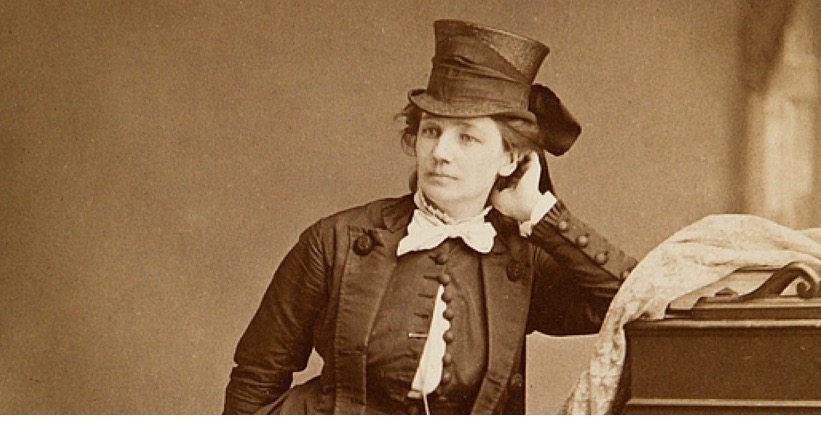CommentsONE MORE THING - We are in the midst of Primaries and even though the emphasis on the Supreme Court leak is not the lead story for the media anymore, it hasn’t disappeared.
Having rather outspoken female family members – no surprise here- we have continued the discussions. I asked them if they were aware of the Equal Rights Amendment (ERA). Both daughters and grand daughters looked at me blankly until I realized, it was introduced in 1972.
In 1972 the daughters cared more about Sesame Street than amendments, and granddaughters were not even contemplated. It occurred to me that I hadn’t seen anything about it either from the Press or on social media.
In the 70’s this was a big deal. I proudly wore my ERA pin to business events, much to the chagrin of my male colleagues, who asked me to remove it since I was making a political statement.
In 1972, the Equal Rights Amendment, designed to guarantee protection against sexual discrimination for women under the law, passed both houses of Congress and was sent to the individual states for ratification. Groups on both sides of the issue mobilized to lobby the states for and against passage.
The ERA failed to meet the requisite number of state ratifications (38) by Congress’ deadline of June 30, 1982, so it was not adopted as a Constitutional amendment. In January 2020, Virginia became the 38th state to ratify the ERA. However, pending legal challenges, the amendment’s future is still up in the air.
The Smithsonian has been collecting stories about women and their contributions to the growth of the United States and has assembled quite a sizeable and impressive file. Women have been advocating for “equal rights” since the mid 1800’s.
According to its web site “The Smithsonian is committed to pushing toward greater equality in history and in the present through the American Women’s History Initiative. This Smithsonian-wide initiative enlists curators, researchers, archivists, educators, and interns who are mentored by Smithsonian staff to reexamine and reinterpret the collections to surface the stories of women and girls that fall beneath the surface. The goal is to rewrite the narrative of American History to include all people.”
Victoria Claflin Woodhull, (September 23, 1838 – June 9, 1927) was an American leader of the women's suffrage movement. In 1872, Woodhull was the first woman to run for President of the United States. This was BEFORE the nineteenth amendment (giving women the right to vote). She made Hillary Clinton look like Phyllis Stewart Schlafly, who was one of the 20th century leaders of the anti-ERA amendment.

Woodhull was the first female stockbroker, published a newspaper, which was a compilation of news and gossip. She believed in free love, Karl Marx, the greenback, and most important- women’s suffrage. She was sued and accused of printing obscene stories. One about a member of the Harriet Beecher Stow family engaging in an affair caused her to lose some of her political clout.
This is a bit of a history lesson because I don’t remember any of this being taught in my college history or political classes. In 1923, in Seneca Falls for the celebration of the 75th anniversary of the 1848 Woman's Rights Convention, Alice Paul (Alice Stokes Paul was an American Quaker, suffragist, feminist, and women's rights activist), first introduced the first version of the Equal Rights Amendment It stated: "Men and women shall have equal rights throughout the United States and every place subject to its jurisdiction." The amendment was introduced in Congress the same year. In early 1940’s both Republicans and Democrats added support for ERA to their respective platforms. The Republicans eliminated it as part of their platform in 1980 when Ronald Reagan became President.
The Equal Rights Amendment passed the U.S. Senate and then the House of Representatives, and on March 22, 1972, the proposed 27th Amendment to the Constitution was sent to the states for ratification. But as it had done for every amendment since the 18th (Prohibition), apart from the 19th Amendment, Congress placed a seven-year deadline on the ratification process. This time limit was placed not in the words of the ERA itself, but in the proposing clause.
We know that Congress moves slowly except when it comes to confirming Supreme Court Judges. Would you believe that the ERA has been introduced in every Congress INCLUDING 2022? Because it was an amendment not just a law, it needed a ratification by 38 individual States. Right away it received 22 of the necessary 38 State ramifications, eight more in 1973, three in 1974 and one in 1975.
In January 2020, Virginia became the 38 State to ratify the ERA. Because nothing goes smoothly in today’s politics, there is no question that 38 States have ratified the ERA. What is holding it up, is not what is contained in the amendment itself, BUT in the preamble, which had stipulated 1982 was the ultimate deadline to get the 38 ratifications. It was missing three States.
Naturally there is a fight in Congress about the length of time it took to get the 38 ratifications. Apparently, there are bills in both the House and Senate to remove the deadline. There is “precedence” since other amendments have had a much longer time to get ratified.
In an opinion, in January of this year, the Department of Justice’s Office of Legal Counsel (OLC) helped clear the way for the Equal Rights Amendment. In January of 2020, under Trump, the OLC issued an opinion arguing that Congress had no power to remove a seven-year timeline for ratification in the preamble of the ERA and that therefore three recent state ratifications were invalid. The OLC opinion issued by the Biden administration strongly affirms the power of Congress to remove the deadline.
Will the passing of the ERA will it change the decision of Roe v Wade? Probably not BUT....it will give the law suits some legs to stand on.
What I find appalling, is that with all the contributions and sacrifices women have made to “make this country great”, a minority of mostly older men still believe we live in a patriarchal society. Those who have passed baby making time…have no moral right to keep the younger generation tied to their misogyny.
It’s no surprise that several States that ratified the ERA, have issued notices of recission (they want to cancel their vote). Nebraska, Tennessee Idaho, Kentucky, and South Dakota — have attempted to rescind their initial ratification of the Equal Rights Amendment. The legality of these recissions is questionable. Article V of the Constitution speaks only to the states’ power to ratify an amendment but not to the power to rescind a ratification.
If you have managed to wade through my treatise on this part of history, which is swept under the rug so to speak, you realize that “Women’s Lib” did not start in the turbulent 60’s. It has been ongoing for centuries. It’s about time to make it a non-issue.
VOTE VOTE VOTE
(Denyse Selesnick is a CityWatch columnist and a former publisher/journalist/international event organizer. Denyse can be reached at: [email protected].) Top Photo: Gloria Steinem, leader and spokeswoman for the American feminist movement














